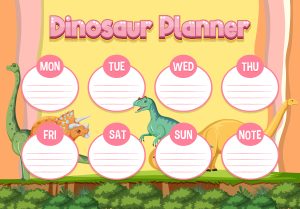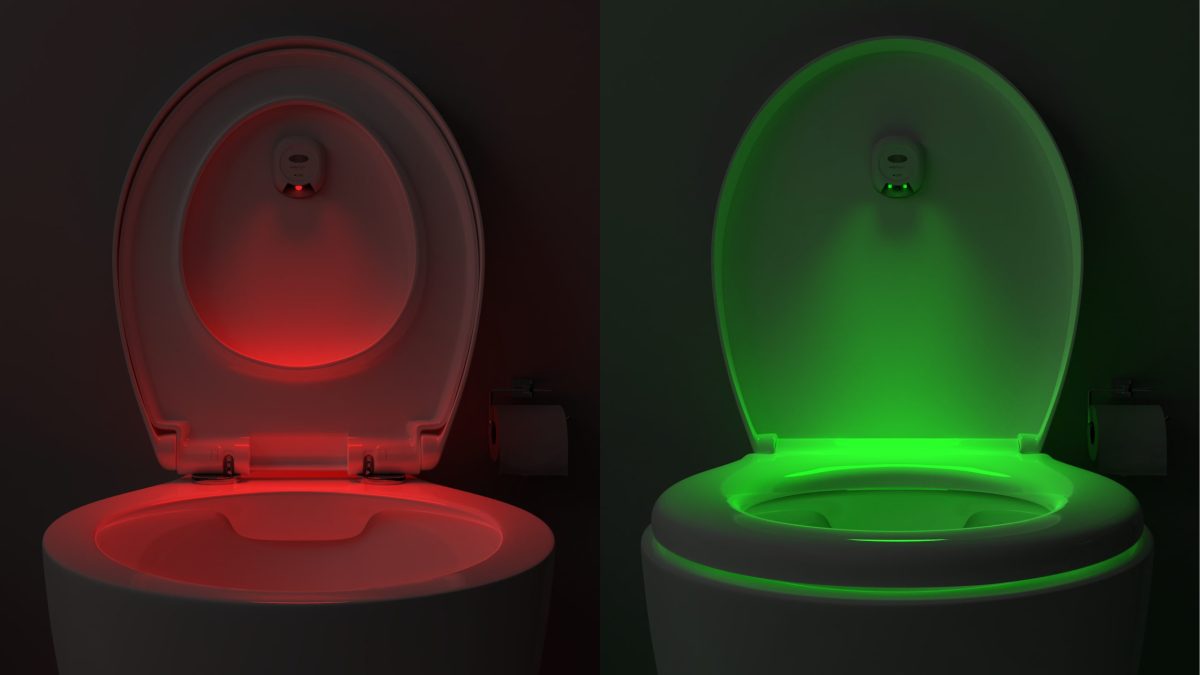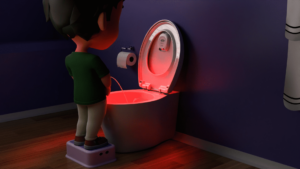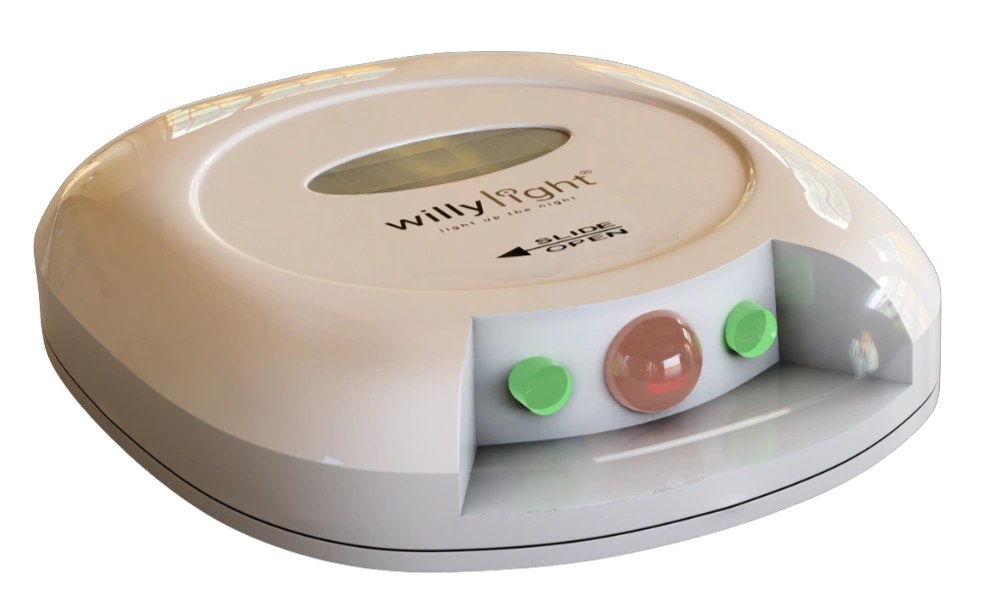
The toilet training aid market has exploded with hundreds of products, leaving parents overwhelmed by choices and unsure which tools actually deliver results. Most products focus on basic toilet use, but the most effective aids in 2025 address the complete toilet training picture: independence, accuracy, etiquette, and consideration for others.
Research and real-world results show that etiquette-focused aids consistently outperform basic options because they prevent long-term problems while building proper habits from day one. Tools that provide immediate feedback about bathroom behavior – like visual cue systems – create lasting success rather than temporary compliance.
This comprehensive guide cuts through the marketing hype to reveal which toilet training aids actually work in 2025, why etiquette-focused tools lead to better outcomes, and how to choose products that build lifelong good habits.
Sarah Chen stood in the baby store aisle, staring at dozens of toilet training products: singing potty chairs, app-connected toilet seats, sticker charts, training pants, books, timers, and countless other gadgets promising “fast and easy” toilet training success.
Overwhelmed by choices and conflicting marketing claims, she wondered: which of these products actually work? And more importantly, which ones would help her son develop not just basic toilet skills, but the consideration and responsibility that prevent years of bathroom battles?
Six months later, after trying multiple products with limited success, Sarah discovered the answer: the most effective toilet training aids focus on building complete bathroom habits – not just basic use. Tools that address etiquette, consideration, and immediate feedback consistently outperform basic products because they prevent problems rather than just addressing symptoms.
This realization led Sarah to prioritize etiquette-focused aids, resulting in her son mastering complete bathroom responsibility in weeks rather than months.

Why Most Toilet Training Aids Fall Short
The Basic Use Trap
Most toilet training products target only the beginning of the process:
- Getting children to sit on a potty
- Recognizing bathroom urges
- Basic cleaning and hygiene
- Celebrating successful attempts
The problem: These basics represent maybe 30% of long-term toilet training success.
What Most Products Miss
The majority of toilet training aids ignore crucial elements:
- Accuracy training for boys who need aim development
- Etiquette education about proper toilet seat management and bathroom courtesy
- Consideration building for shared bathroom spaces
- Immediate feedback that prevents bad habit formation
- Long-term responsibility that prevents family conflicts over bathroom behavior
Why Etiquette-Focused Aids Work Better
Products that address complete bathroom behavior succeed because they:
- Build proper habits from day one instead of requiring later correction
- Address the root causes of long-term bathroom problems
- Provide immediate feedback that supports learning
- Create pride in complete bathroom responsibility
- Prevent the conflicts that arise from poor bathroom habits
Categories of Toilet Training Aids: What Works vs. What Doesn’t
Potty Chairs and Toilet Seats
Basic Options (Limited Long-Term Value)
Standard potty chairs: Simple plastic chairs with removable bowls
- Pros: Inexpensive, familiar concept, easy to clean
- Cons: Don’t teach real toilet use, require transition later, no etiquette training
Singing/musical potties: Chairs that play music during use
- Pros: Initial novelty and engagement
- Cons: Short-lived appeal, can become distraction, no skill building beyond basics
Effective Options (Long-Term Success)
Toilet seat inserts with stability: Well-designed seats that fit securely on regular toilets
- Pros: Teach real toilet use immediately, no transition required, family toilet familiarity
- Cons: Require step stool, may need adult assistance initially
Adjustable toilet seats: Seats with built-in child inserts
- Pros: Family-friendly, teach real toilet use, long-term utility
- Cons: Higher initial investment, installation required
Visual and Feedback Systems
Basic Options (Temporary Impact)
Sticker charts: Traditional reward tracking systems
- Pros: Visual progress tracking, celebration of success
- Cons: External motivation only, don’t teach actual skills, lose effectiveness over time

Target aids: Floating targets or toilet bowl inserts for aim practice
- Pros: Make aim practice engaging, provide immediate feedback
- Cons: Limited to boys, don’t address etiquette, temporary novelty
Game-Changing Options (Comprehensive Success)
Immediate feedback systems: Tools that provide instant visual confirmation of proper bathroom behavior
- Pros: Address complete bathroom habits, build intrinsic motivation, prevent bad habit formation
- Example: The Willy Light provides immediate visual feedback about toilet seat position, teaching proper etiquette and consideration from day one

Multi-skill visual aids: Systems that address multiple aspects of bathroom behavior simultaneously
- Pros: Comprehensive skill building, immediate reinforcement, long-term habit formation
- Cons: May require initial explanation, higher investment than basic charts
Training Pants and Undergarments
Basic Options (Mixed Results)
Pull-up training pants: Disposable pants that pull on like underwear
- Pros: Easy for caregivers, familiar feel, good for outings
- Cons: Too absorbent, don’t provide wetness feedback, can delay progress
Basic training underwear: Cloth underwear with minimal padding
- Pros: Immediate wetness awareness, “big kid” feeling, washable
- Cons: Messy accidents, require frequent changes, laundry intensive
Effective Options (Balanced Approach)
Wetness-sensing training pants: Products that provide immediate feedback when wet
- Pros: Natural consequences, learning reinforcement, accident management
- Cons: More expensive than basic options, still require cleanup
Graduated training systems: Multiple levels of protection that decrease over time
- Pros: Support skill building progression, confidence building, realistic expectations
- Cons: Requires multiple purchases, more complex than single solution

Books and Educational Materials
Basic Options (Foundation Only)
Simple toilet training books: Stories about using the potty
- Pros: Introduce concepts, reduce anxiety, normalize process
- Cons: Don’t teach actual skills, limited engagement over time
Basic instruction manuals: Step-by-step guides for parents
- Pros: Systematic approach, troubleshooting help, expert advice
- Cons: Generic advice, don’t address individual differences or complex issues
Effective Options (Comprehensive Education)
Etiquette-focused books: Stories that teach consideration and bathroom responsibility
- Pros: Address complete bathroom behavior, social skill building, long-term habit focus
- Cons: Less common, may require adult explanation
Interactive educational tools: Books with activities, visual aids, or hands-on elements
- Pros: Engagement beyond reading, skill practice opportunities, multi-sensory learning
- Cons: Higher cost, may require adult involvement
The 2025 Reality: What Actually Works
Evidence-Based Effectiveness Rankings
Based on real-world results and long-term success rates, here are the tools that consistently deliver:
Tier 1: Game-Changing Tools (Highest Success Rates)
- Immediate visual feedback systems – Address complete behavior, prevent problems
- Quality toilet seat inserts – Teach real toilet use from day one
- Comprehensive educational approaches – Build understanding and motivation

Tier 2: Valuable Support Tools (Good Supplementary Value)
- Graduated training pants – Support skill progression
- Target practice aids (for boys) – Develop accuracy skills
- Routine-building timers – Establish consistent habits
Tier 3: Basic Tools (Limited Long-Term Impact)
- Standard potty chairs – Initial familiarization only
- Basic sticker charts – Short-term motivation
- Simple training books – Concept introduction
Why Visual Feedback Systems Lead the Pack
Immediate reinforcement: Children see results of their behavior instantly Complete skill building: Address etiquette, accuracy, and consideration simultaneously
Intrinsic motivation: Build internal pride rather than external reward dependence Problem prevention: Stop bad habits before they form rather than correcting them later Long-term effectiveness: Continue working throughout the entire training process
The Willy Light exemplifies this approach by providing immediate visual feedback about toilet seat position, teaching boys essential etiquette skills while building consideration for family members.
Age-Specific Tool Recommendations
Ages 18-24 Months: Foundation Building
Essential tools:
- Quality children’s toilet training books
- Potty chair for familiarity (not active training)
- Step stool for bathroom observation
Avoid: Active training tools, reward systems, pressure-creating products
Ages 2-2.5 Years: Readiness Assessment
Helpful tools:
- Visual cue systems to assess interest
- Simple toilet seat inserts for trial sits
- Educational books about bathroom behavior
Focus: Assessment and preparation, not intensive training
Ages 2.5-3 Years: Active Training
Essential tools:
- Immediate feedback systems (like Willy Light)
- Quality toilet seat inserts
- Graduated training pants
- Target practice aids (for boys)
Strategy: Comprehensive skill building from day one

Ages 3+ Years: Skill Refinement
Effective tools:
- Advanced visual feedback systems
- Etiquette-focused educational materials
- Independence-building tools
- Consistency-supporting reminders
Goal: Complete bathroom independence and responsibility
Gender-Specific Tool Recommendations
For Boys: Complex Needs Require Specialized Tools
Essential for boys:
- Visual feedback systems: Critical for aim and etiquette development
- Target practice aids: Support accuracy skill building
- Etiquette education tools: Prevent long-term family conflicts
- Dual-position training supports: Handle sitting and standing requirements
Why boys need more: Boys face unique challenges including aim training, etiquette learning, and multi-position mastery
For Girls: Streamlined But Thorough Approach
Effective for girls:
- Quality toilet seat inserts: Support confidence and independence
- Hygiene-focused tools: Build proper cleaning habits
- Social motivation systems: Leverage natural desire for approval
- Independence-building aids: Support self-sufficiency development
Red Flags: Products to Avoid in 2025
Overly Complex Technology
Problem products: Apps that require constant phone interaction, overly complicated electronic systems Why they fail: Distract from actual skill building, create technology dependence, often malfunction
Single-Purpose Gimmicks
Problem products: Toys that only entertain, novelty items without educational value Why they fail: Short attention span, don’t build lasting skills, become ignored quickly
Pressure-Creating Tools
Problem products: Products that shame accidents, create anxiety, or rush the process Why they fail: Negative associations with bathroom use, increased resistance, potential regression
“Magic Solution” Claims
Problem products: Anything promising “3-day training” or “guaranteed success” Why they fail: Unrealistic expectations, don’t address individual differences, ignore complexity
Building Your Toilet Training Toolkit: Budget Considerations
Essential Investment ($50-100)
- One high-quality immediate feedback system
- Sturdy toilet seat insert
- Basic educational materials
- Graduated training pants
Enhanced Success Kit ($100-200)
- Comprehensive visual feedback system (like Willy Light)
- Multiple target practice aids
- Advanced educational materials
- Quality step stool and accessories
Premium Comprehensive Approach ($200+)
- Multiple specialized tools for different skills
- Professional-grade toilet training aids
- Extensive educational library
- Backup and variety options
Reality check: The most expensive approach isn’t always the most effective. Focus investment on tools that address complete bathroom behavior rather than accumulating many single-purpose items.
Success Story: The Right Tools Make All the Difference
The Rodriguez family struggled with toilet training their 3-year-old son Miguel using basic tools: a singing potty chair, simple sticker chart, and pull-up training pants. After six months, Miguel could use the toilet sporadically but showed no accuracy, etiquette, or consistency.
“We realized we had a lot of products but weren’t actually teaching him anything beyond sitting on a toilet,” explains mother Carmen Rodriguez.
They shifted to an etiquette-focused approach using visual feedback tools and comprehensive education. The Willy Light provided immediate feedback about proper bathroom behavior, while target practice aids developed accuracy skills.
“The transformation was incredible,” notes father Luis Rodriguez. “Within a month, Miguel went from needing constant cleanup to taking pride in perfect bathroom behavior. The immediate feedback made it clear what ‘success’ looked like, not just for toilet use, but for being considerate of others.”
Choose Tools That Build Complete Success
The toilet training aid market is full of products that promise easy solutions but deliver limited results. In 2025, the most effective approach focuses on tools that build complete bathroom habits from day one rather than just achieving basic toilet use.
Etiquette-focused aids consistently outperform basic options because they prevent the long-term problems that create months or years of bathroom conflicts. When you invest in tools that provide immediate feedback, build consideration skills, and address the complete picture of bathroom responsibility, you set your child up for lasting success.
Don’t be overwhelmed by endless choices. Focus on aids that teach real skills, provide immediate feedback, and build the habits that prevent future problems. The right tools, chosen strategically, make toilet training faster, more successful, and less stressful for everyone involved.
Remember: effective toilet training aids are an investment in your child’s long-term success and your family’s harmony. Choose tools that build complete bathroom responsibility, not just basic toilet use.
For detailed guidance on implementing these tools effectively, explore our related articles on visual cues in toilet training, teaching proper etiquette, gender-specific strategies, and age-appropriate approaches.




